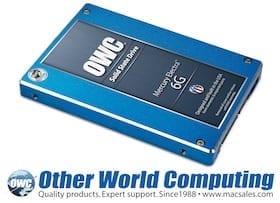 Other World Computing today announced the OWC Mercury Electra 6G SSD, a new consumer/prosumer targeted SandForce Driven SATA Revision 3.0 6Gb/s Solid State Drive. Designed and built in the USA utilizing the highest quality components available like Tier 1/Grade A NAND, the OWC Mercury Electra delivers 556MB/s read and 523MB/s write sustained data rates for over 7X faster performance than a standard factory hard drive found in Mac and PC computers.
Other World Computing today announced the OWC Mercury Electra 6G SSD, a new consumer/prosumer targeted SandForce Driven SATA Revision 3.0 6Gb/s Solid State Drive. Designed and built in the USA utilizing the highest quality components available like Tier 1/Grade A NAND, the OWC Mercury Electra delivers 556MB/s read and 523MB/s write sustained data rates for over 7X faster performance than a standard factory hard drive found in Mac and PC computers.
Three Consumer/Prosumer Models Offered Starting At $229.99
Offering the SATA Revision 3.0 performance of a 6G SSD, but aggressively priced like a SATA Revision 2.0 3G SSD, the OWC Mercury Electra 6G is ideal for high speed personal computing, home office environments, gaming, and production workstations, can be incorporated into a RAID 1 or SPAN configuration, and is available for immediate ordering in three capacity sizes:
- 120GB OWC Mercury Electra 6G with 7% Over Provisioning and Tier 1/Grade A NAND $229.99 MSRP
- 240GB OWC Mercury Electra 6G with 7% Over Provisioning and Tier 1/Grade A NAND $479.99 MSRP
- 480GB OWC Mercury Electra 6G with 7% Over Provisioning and Tier 1/Grade A NAND $929.99 MSRP
Maximizes Any Computer’s 3G And 6G Data Bus
Whether a consumer has a Mac or PC with the SATA Revision 2.0 (3Gb/s) data bus or machine with the latest SATA Revision 3.0 (6Gb/s) interface, the OWC Mercury Electra 6G SSD is able to deliver near bus saturating speed when installed in either interface. OWC benchmark testing confirms the Mercury Electra 6G SSD delivers up to 284MB/s sustained reads and 268MB/s writes in the “3G’s” 300MB/s max speed bus. Taking advantage of “6G’s” interface’s maximum bandwidth of 600MB/s, the Mercury Electra 6G SSD provides up to 556MB/s sustained reads and 523MB/s writes.
Doesn’t Slow Down With Use Like Ordinary SSDs
Ordinary SSDs offer fast read/write performance during first initial uses, but can then experience significant write speed degradation over repeated, long-term usage. Independent simulation tests by leading drive performance experts confirm OWC Mercury SSDs’ ultra-efficient block management, wear leveling technologies, and real-time data redundancies enable incredibly high performance and extreme reliability, both of which are maintained over long-term intensive use.
Up To 100X Greater Data Protection
Speed doesn’t matter if it can comprise data integrity. Thanks to SandForce DuraClass technology, the OWC Mercury Electra 6G is able to provide up to 100X higher data protection than provided by ordinary SSDs as well as leading enterprise class hard disk drives. By combining the highest level of Error Correction Code (ECC) and SandForce RAISE (Redundant Array of Independent Silicon Elements) technology along with 7% over provisioning, the OWC Mercury Electra 6G provides RAID like data protection and reliability.
Risk-Free 30-Day Satisfaction Guarantee
To ensure the highest level of customer satisfaction and confidence, OWC is extending its renowned 30-Day Money Back Guarantee on its SSD line to include the new Mercury Electra 6G SSD. If a consumer is not completely satisfied with an OWC Mercury Electra 6G SSD for any reason, they simply need to contact OWC’s award-winning Customer Service department – which offers 24/7 Live Chat support – to request a full, hassle-free refund.
“We’re very excited to continue the evolution of our solid state drive line with this new Electra model,” said Larry O’Connor, Founder and CEO, Other World Computing. “We’re being very aggressive in pricing this model to appeal to consumers and prosumers who have yet to make the SSD switch. With over 500MB/s of highly reliable performance, the OWC Mercury Electra helps Mac and PC owners make their machines quickly and easily ‘faster in a flash’”.
Expands Most Comprehensive SSD Line For Macs And PCs
The new Mercury Electra 6G SSD joins OWC’s existing line of performance leading, world speed record breaking Mercury Pro SSDs for nearly every Mac and PC produced over the past decade available in capacities from 40GB to 480GB starting from $99.97:
• OWC Mercury Aura Pro
First and only high performance SandForce processor based SSDs for 2008-2010 Apple MacBook Air models that use SSD “modules/sticks” and netbook/subnotebook computers that use an internal 1.8″ sized SATA drive.
• OWC Mercury Legacy Pro
First and only SandForce processor based IDE/ATA SSDs available for pre-Intel PowerPC based Mac and PC notebook/laptop and desktop/tower computers.
• OWC Mercury EXTREME Pro 3G SSD
High performance 2.5″ SATA Revision 2.0 SSD with up to 285MB/s sustained reads and 275MB/s writes for demanding portable and desktop tower use.
• OWC Mercury EXTREME Pro 3G RE SSD
RAID-Ready Enhanced performance with 28% over-provisioning for data centers, network operation centers, and dedicated RAID installations. Used to set overclocking world record.
• OWC Mercury EXTREME Pro 6G SSD
Ultra high performance 2.5″ SATA Revision 3.0 SSD with over 500MB/s sustained data rates and up to 479MB/s incompressible data rates for nearly SATA 3.0 bus saturating speed for prosumers and A/V, photography, and graphic production professionals.
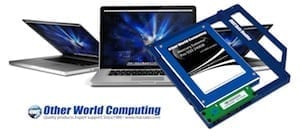
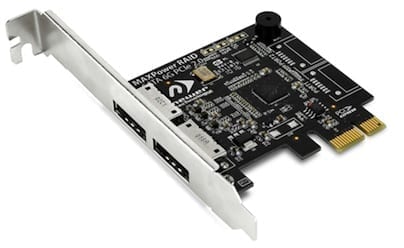


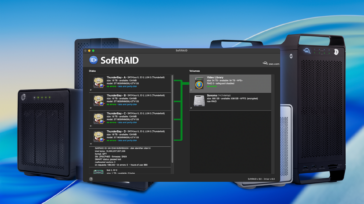
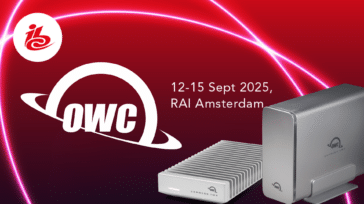



Thanks for a great walkthrough of the specs as well as feedback. Just put in an order on a 6G 240GB. Excited!
I bought a MacBook Pro 17 just a week ago, and then saw this blog with the issues around the Mercury 6G drives. Apple tells me that they know about the problem, but say nothing else. Should I order one and see if it works, returning it if it does not, or wait until some kind of fix or response from Apple addressing the issue surfaces?
Technically Ted…the Mercury 6G drives are not the problem…NO 6G SSD brand has been found to be 100% with the 2011 MBPs…because it is an Apple hardware issue. But to be fair, Apple has never specified nor advertised the 6G capability.
To answer your question is difficult not knowing you personally, but with our guarantee…as long as you follow the requirements, I’d say give it a try if you really are desiring a 6G speed SSD.
We use Bootcamp all the time here, no issues what so ever….SSD is just like any other drive, no drivers needed, plug and play!
Are there any issues I should be aware of running bootcamp (Win 7) with these drives?
Hi I’ve noticed your comments regarding the 6G drives in 15″ 2008 MBP 5,1 having technical issues causing the drives to only perform at 1.5GB/s does this include the early 2009 15″ 2.66ghz Model ? the reason I prefer the 6g is for the minor price difference of the 240gb models it looks a lot better and I would be future proofing myself for swapping the drive to install in a new machine.
Hi Draxel….no issues with the 2009 model that we’re aware of….but just realize that any 6G SSD you put in will only operate at 3G speeds…
I can dig your future proof concept…makes sense to me…so maybe the Electra makes most sense as we like to say it’s priced like a 3G, but fast like a 6G…
Good luck!
I am thinking about the the Mercury Extreme Pro 6G and noted that the specs list random 4K file read/writes up to 60,000 IOPS. I know the IOPS can drops significantly depending on the memory configuration. Could you provide data for the 120gb model specifically?
Hi Mike and sorry for delay…always some cool new product development here! Because user situations can vary and our drives are consistently fast, we just provide the max data point like all other brands…which for our 6G SSDs is up to 60K IOPS
Is there some Datasheet on the Electra 6G or the Extreme Pro 6G ?
I am trying to decide which one I’ll get. I wish to compare the timming on the Async NAND vs the timming on the Sync one.
I already bought the Extreme 6G (thank you for offering extremely cheap international shipping btw, +1 for OWC), but I’ve always been curious on one thing.
What are the difference between asynchronous and synchronous NAND in terms of performance and power usage?
I have a 2009 Mac Pro (MacPro4,1) Quad-core 2.26 and was thinking of getting an SSD like this for it.
1) Will my computer make use of the 6G or is it capped at 3G speeds? (If so, are there options to get the faster speed or is that built into the motherboard?)
2) What bracket do you recommend to install an SSD in the 2nd optical bay? Will I need additional cables?
Hi Jon…your 2009 Mac Pro is 3G…6G only came out in 2011 MBP models.
To install a 2.5″ SSD in a 5.25″ optical bay, you’ll need one of our MultiMount kits:
http://eshop.macsales.com/search/multimount
I installed into the lower optical bay without the mount, works fine, no noise, plug and play… 8 mos later no problems, it seems to rest just fine on the inside, i did put a few corners of foam to soften it.
So would it be fitting to compare these 2 to the like of OWC Mercury Extreme Pro 6G (OZC Vertex 3) and Mercury Electra 6G (OZC Agility 3)? Seems like it would be. Just got 2×240 Extreme 6G’s. 1 for the laptop and one for the tower boot drive. Love them. Thanks for putting the Mac users first, again.
On many levels, you could draw that comparison except for the exclusive use of Tier 1/Grade A NAND flash in all OWC SSD models. Simply put, we don’t use anything but the highest quality flash in all our Solid State solutions and no other Solid State Drive manufacturer lists as complete and detail specs as we do. And then…comparing the Extreme Pro 6G to the OCZ….well…we’re the only drive with a 5 year warranty and we’re not doing a recall of our drives unlike other brands currently are….
As one media source recent stated, and I’m paraphrasing here…. “OWC may not be first with intros in the SSD realm…because they take their time to make sure when they intro a product, it’s 100% solid”
Man, the issues w/ the 2011 MBP’s and I think 2011 iMac’s as well….is so weird.
You would think that by law, a company that sells an item- well that item must be the same across the board if it is advertised as such and the pricing is the same.
How can they legally sell the new MBP (and iMac) 2011’s when you don’t know what to expect? Each model is either this or that.
Makes no sense to me whatsoever and there must be some policy that does not allow the consumer to have to deal with such “suprises.”
I remember either you guys, or some other site, said that Apple was going to give an official statement about this issue. Have they done this yet?
This is the single reason I am not purchasing the new Macbook Pro’s (which I would then upgrade to OWC SSD’s).
So, so lame!!!!! It’s bad business for everyone from apple to third party suppliers to the consumer. I know Apple “thinks different,” but in my opinion, this is just “not thinking” at all.
O-Dub Scott
Remember Scott…Apple has never advertised or listed the spec as 6G….so really, it’s like a treasure hunt to find a machine that works flawlessly with any brand 6G SSD…
True, true.
BUT- one is clearly BETTER than the other. It just doesn’t make any sense. I’m starting to think it was just a massive screw-up (although that’s a pretty big one- kinda hard to miss).
I mean, they have full on assembly lines, machines, etc….all of the parts should be identical…not a little bit of this….a little bit of that.
Ah….just frustrating myself! ha
O-Db Scott
Yo Grant-
One thing I will say is your guys’ 30 day money back guarantee is brillant!!
It’s great for people who dove in not knowing if they got SATA 3G or 6G. I wonder what would happen if I bought a new MBP, it turned out to be 3G, and I called Apple and said, “My buddy and I both bought one at the same time (or I bought two) and one 3G and one 6G- aren’t these the same products?”
I mean, what could they or any company possibly say to that?
Frustration vented….
O-Dub Scott
I am currently looking to buy the 2011 iMac, but I have been holding off waiting to see some future developments.
1) Are the fans still an issue when you replace the factory HDD? I know there have been work arounds, but I’m curious as to OWCs solution… which of course begs me to ask, do you still have plans for offering the turnkey program on the 2011 iMacs?
2) I remember reading about a 4k read/write issue with the OWC drives. Has this been fixed? Will there be any issues, other than the fan issue above, if I install a couple of these things in my new iMac?
I know, and appreciate, that you have a money back, return policy, so I’m not too worried, but I want to verify any issues that may occur. I plan on setting them up in a raid 0 configuration… have you tried this with two 6G SSDs in the new 2011 iMacs? I’d also like to pull out the optical, and replace it with a HDD for time machine. Can you see any issues I may run into?
Thanks
First issue I see is that we don’t offer any kind of mounting bracket for SSDs in an iMac…so mounting would be at your own engineering.
We’re still looking into the Gravis external solution for fan control…and thus one reason why our turnkey program is taking some time to unveil.
Not sure of any 4K issue with our drives…no issues and our brand is not part of any recall other brands are experiencing…
Hi,
Will a firmware update be required to use the 6G Pro Extreme in Lion?
Thanks,
Michael
As an Apple Developer, we cannot comment on Lion until it is officially released. However, a drive is a drive…
Hi guys,
I’m looking forward to buying the Electra (or the Extreme 6G) but I’ve been hearing some news about SandForce driven SSDs having some problems due to firmware or hardware issues.
Are the OWC SSDs affected by this issue at all?
The issue as we know it is due to other manufacturers not following the standard design and/or modifying firmware beyond SandForce paramenters.
For the record, OWC SSDs are not experiencing any issues related to above. There are no forum posts, articles, etc. that imply or say directly anything of the sort that OWC is affected by this…and frankly no other SF based SSD from a manufacturer that has not DEVIATED from standard design parameters will be affected either. Appears two manufacturers, one of which we pointed out awhile back was using NON Tier 1 NAND (SpecTek), didn’t follow “the rules” and now are paying the price…
Hi Guys,
Macrumors forums claims that with the current crop of OWC SSD’s, you cannot use any OS X install disk to install OS X on the SSD. You have to clone a working HD onto the SSD (or so they say). Is this true, and if so, is it still true with this crop of SSDs?
Also, I have an Al Core 2 Duo iMac (iMac7,1) 20″ / 2.4ghz that I want to outfit with a SSD. Can I future proof and get this new Electra 6G SSD, or am I better off just getting the normal 3G? And can I fit the SSD using a 2.5 to 3.5″ converter? Thanks!
That’s a new one on us! No truth to that….OS X installs just fine on any of our OWC SSDs…the ONLY caveat to this are Apple hardware related issues affecting ALL 6G SSDs….the 2008 15″ 5,1 and 2011 17″ 8,3…see our note at bottom of any 6G page.
The issue might be that you can’t install a Mac OS version prior to the one that was shipped with your MBP. I spent days trying to install OS 10.6 on my MBP 2011 on your SSD , getting always a kernel problem untill I installed version 10.6.7 which comes with the 2011 MBP and it worked fine.
I have a Mercury Extreme Pro 3G & Mercury Extreme Pro 6G , both in an early 2011 MacBook Pro 15″. I have clean installed Snow Leopard on both of these drives. I have installed from the original DVD provided by Apple, and from a USB memory stick I created from the original DVD.
On the Mercury Extreme Pro 6G, with the memory stick – total install & reboot time SIX (6) minutes!!!!!
How does power usage compare between the different SATA SSD models? I have a MacBook 2,1 with a SATA I port and am interested in which SSD would give best battery life.
Hi Matthew…best best since you have a 2,1 model is the Mercury Extreme Pro 3G…it offers the best battery life. In fact, this review that came out yesterday should help in your decision:
http://gigaom.com/apple/tested-ssd-brings-new-life-to-an-old-macbook/
I’ll have to have a think about it. Is the battery life much better than the other models? Is this true also if put in a new Mac?
Unfortunately with all the data I have (and considering I use Boot Camp) I’d need at least a 240GB model which is a fairly expensive upgrade to an old machine. I may purchase a new Mac next year, so would possibly want to put that in the new machine. Hopefully the 2012 MBPs will have working SATA III and have USB3 ports as well. If the 2011 MBP had USB3, I may well have bought one by now.
Also I heard that SSD drives wear out from use in that they have a certain number of cycles and then stop working. I was thinking perhaps of getting more SSDs perhaps for machines which I sometimes write 10s of GBs of data per day to on a fairly regular basis. Would this be a bad idea?
Hi Matthew:
Yes, flash is a commodity, just like a rechargeable battery that had a certain amount of charging cycles in it before it just doesn’t hold a charge anymore. The cells have a limited lifetime, but we’re talking in terms of years – not too dissimilar to the time that a standard, platter based hard drive would suffer from a physical drive failure. It becomes more of an issue for the manufacturer in design of the SSDs than it becomes for an end user purchasing from a trusted source.
All OWC SSDs use only Tier 1/Grade A flash in our SSDs. Add that to the Wear Leveling and Block Management properties of the SandForce controllers and you’re assured to have a good long lifetime of use with any SSD from the OWC family of drives. Our Extreme Pro 6G comes with a 5 year warranty…we fully expect them to well exceed that period of use. Heck, our Extreme Pro 3G has a MTBF rating of 2,000,000 hours…which under 24/7 use, the drive will last 228 years. I’d say that’s pretty reliable and thus nothing to worry about. ;-)
Battery life is much better when utilizing any SSD in a notebook computer versus a standard, platter-based hard drive. Standard hard drives require a significant amount of power since they have physically moving parts inside. In order to get motion, energy must be expended – the more motion, the more energy. Solid State Drives have no moving parts inside, so that additional energy expended to spin the platters isn’t needed – resulting in a greatly reduced power draw.
Also, it is very difficult to come up with an absolute in power usage due to system settings and user habits. For the most part, people are seeing anywhere from 50-100% improvement in battery life. It’s just that results will vary…
I currently use a 500GB 7200RPM HDD, so I guess it’d be a very big improvement from that going to a SSD.
But what about the difference in battery life between the Extreme 3G, Extreme 6G and the Electra? How big is it?
Ok. Now I’m even more confused. I see the section about incompressible data with the 6G SSD versions but none for the 3G SSD version. I have a 2010 i5 2.4 MBP 15 inch. I use it mostly for Lightroom and iMovie 11. Which SSD should I buy? Looking to get the 240GB SSD.
Hi Eh….since you have a 2010 MBP, our Mercury Extreme Pro 3G is the best course of action as your machine only supports up to SATA Revision 2.0 (3Gb/s…AKA 3G) speeds.
How is this line/drive different from the Mercury EXTREME Pro 6G SSD?
The comparison between lines is seen easiest on the chart here.
While that chart is pretty, you know some of us won’t be satisfied with anything less than tech spec comparisons…. That being said, is the only difference the use of Asynchronous NAND versus the Extreme models Synchronous NAND interface?
3 year warranty for Electra vs 5 year for EXTREME
Incompressible data rates higher for EXTREME
Electra priced like a 3G, Fast sustained peak data rates like a 6G
that’s pretty much the diff…
Yes, but what is the underlying technical difference to cause this. I’d guess the difference if the NAND flash used, with the Electra using lesser NAND than the Extreme. This would make sense for the incompressible data speed difference (slower flash) and shorter warranty (fewer rated cycles). That’s just a guess, though. I’d love to hear something from those in the know.
We expect all of our product lines to well outlast warranties given. That said, the EXTREME Pro 6G is now positioned as Prosumer model and part of the differentiation is giving that model a 5yr Warranty as opposed to the more typically 3yr (or shorter) found with competing models. It is not a reflection of quality or life span for the applications these models support.
The technical difference is the use of asynchronous NAND in the Electra versus the synchronous NAND in the EXTREME. It has everything to do with how the data is moved to and from the flash. And I should note that BOTH models…as well as any other OWC SSD…use only Tier 1/Grade A NAND. To us, the use of such quality components does make a difference in both performance as well as reliability.
You can think of asynchronous communication as a simple game of catch where the ball is the data being written. One person throws the ball, the other person catches it. Rinse and repeat. It’s a simple communication, the thrower can hold onto the ball and throw when the catcher is ready – there isn’t any real need for precise timing.
Synchronous communication on the other hand is like when two jugglers pass balls between them. Your data is timed to go back and forth almost simultaneously. Its a bit more complex, but you get greater throughput. The complexity in this timing makes the chips themselves more expensive.
HI,
I recieved the EXTEME Pro 6G several days ago, does it REALLY work with RAID 0 or (10) with the Intel Z68, when I bought it several days ago before you released the Electra the sales person said the RAID version would not be available for a month or two…
Best
Borys
The New Electra 6G Drive is rated for RAID 1 or SPAN only while the EXTREME Pro 6G is rated for RAID 0, RAID 1, RAID 10 or SPAN.
I need to buy 1 or 2 SSD’s for Macbook Pro’s used for photography. Now with all of these drives coming out I am not sure which is best. I have the 17″ Macbook pro with the i7 processor. Do these laptops have the 3G or 6G connection?
Thanks
Hi Edward….by photography use…how do you mean exactly? Also…your 17″ model…we have a very specific note on our SSD pages due to that notebook model:
2011 MacBook Pro 17″ (Model ID MacBookPro8,3)
There are sporadic reports of 2011 17″ MacBook Pro “Core i7” models (model ID 8,3) exhibiting fluctuating performance results with ANY brand 6Gb/s SATA Revision 3.0 SSD. It has been determined this is related to an Apple manufacturing issue. Some customers have found the OWC Shielding Kit improves some or all of the performance results, however there are instances where it has not. The fluctuating performance results do not occur when using our ‘3G’ (3Gb/s) SSD model in this machine.
As we’ve noted in other blog posts, this is a random, luck of the draw aspect to each machine…you either have one that works flawlessly with any SSD…or you do not.
But that’s why we created the industry’s first 30 day money back risk free trial…so you can try without any hassle or dissapointment. Check out the guarantee logo on any of our 6G or 3G pages…
Hi Grant,
Thanks for getting back to me. The Macbook Pro’s I would be upgrading are the 2010 17″ i7’s. Which SSD would be best for that one?
Another option is to replace one of the 2010’s with a quad-corre 2011 i7 for better performance. Then I would have to worry about the issue you describe above. Is there a way to determine if the laptop you buy has this problem?
By photography I primarily mean tethered capture with Phase One’s Capture One Pro. I am only interested in shooting quickly and have images generate quickly on screen and be responsive when adjustments are made. Currently it is less than sufficient for clients on set. I’m sure the SSD will help alot but trying to get info from Phase One if the quad-core is worth it too. Thanks for your help.
Hi Edward….for your current 2010, our Mercury Extreme Pro 3G is the best course of action as your machine only supports up to SATA Revision 2.0 (3Gb/s…AKA 3G) speeds.
The 2011’s…man…we wish there was a way to tell or “cherry pick” which 2011’s will work with a 6G machine.
What you can do is both our 3G and 6G have a 30 day risk free trial….it sounds like from your description of intended use that our nearly 300MB/s Extreme Pro 3G will be more than what you need to generate your images on screen to show clients. I’d say give the 3G a try and you’ll find it meets all your needs with least amount of expense and hassle.